Home » How to Measure Your Bra Size
How to Measure Your Bra Size
There’s a marketing cliché that “80% of bra wearers are wearing the wrong size.” Though it’s over-repeated, we believe there is some truth to it. With many brick and mortar stores carrying a limited size range, many of us make do with a bra that’s just okay (and probably feels a bit uncomfortable).
But we shouldn’t. A bra is something we wear almost all day, every day. The correct size is crucial to comfort and support. We all deserve a bra that feels 100% comfortable, so we can feel our best.
We hope we can help you find the right bra size and understand why that’s the right size for you.
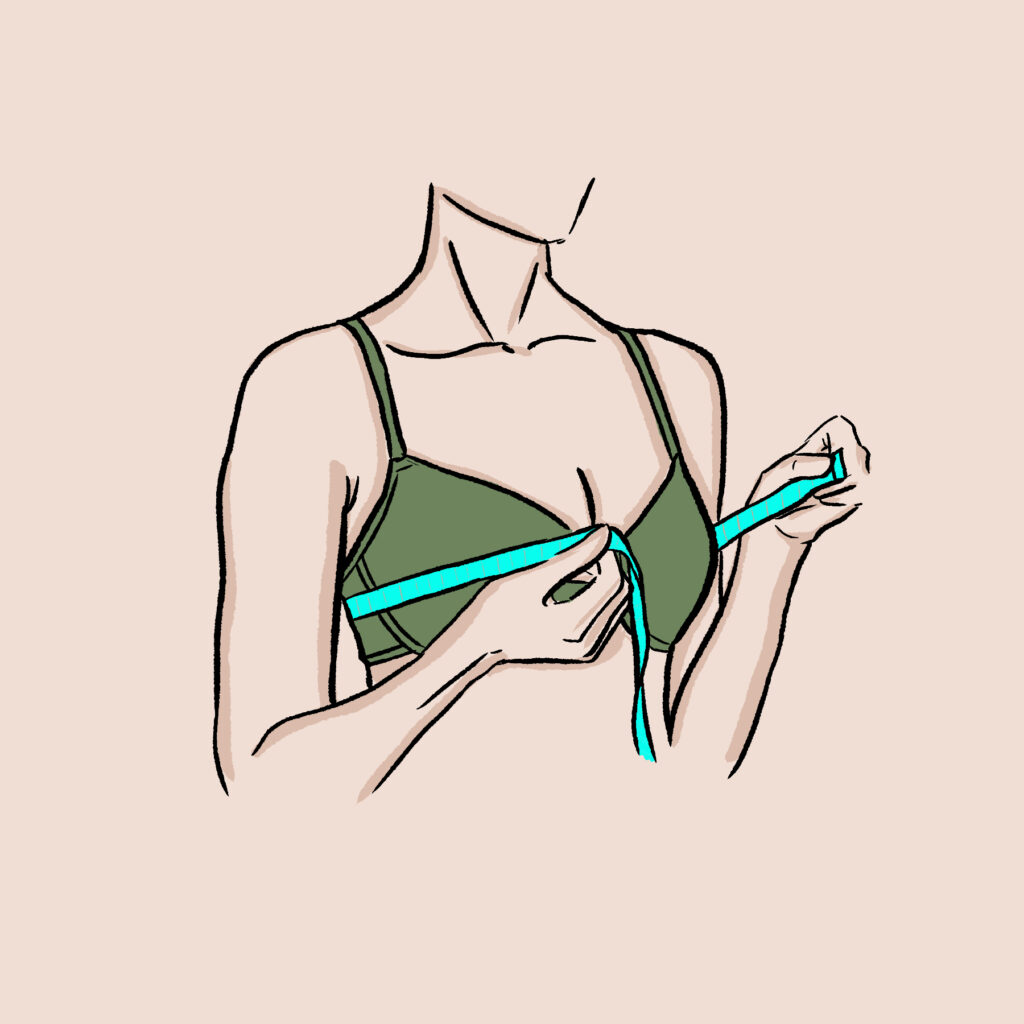
How bad can wearing the wrong size be?
A bra that’s the wrong size doesn’t fit properly, and cannot offer the comfort and support you need.
For example, if the band is too loose, then the shoulders straps could dig in, causing shoulder, neck, and back pain. If the cups are too small, your breasts could be squished, leading to skin irritation.
If you are used to shopping at stores that stop at a DD, you may have been making do with the best bad option all along. Your bras should fit your breasts, not the other way around.
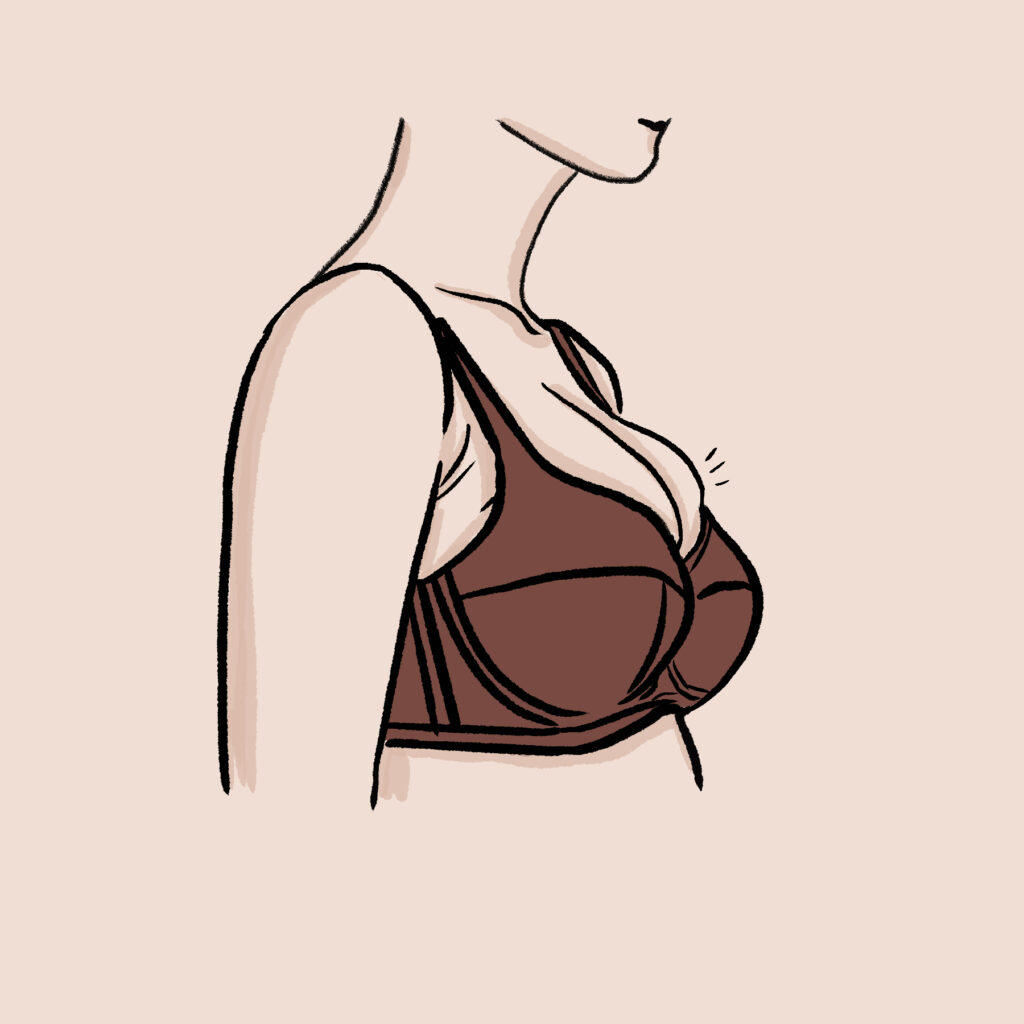
A quick refresher on the fundamentals of bra size:
- Band size: how wide your ribcage is (an even number)
- Cup size: how much volume your breasts have (a letter)
Generally, your cup size is the difference between your bust and underband (how much your breasts “protrude”).
1-inch difference = A
2-inch difference = B, etc.
But as bra fitters know, bra sizing is a little more nuanced than that. To nail your bra size, you need to take into account your breast shape, desired support level (“locked ‘n loaded” or “as you are”), and personal preference for fit (“prim and proper” or “lounge”).
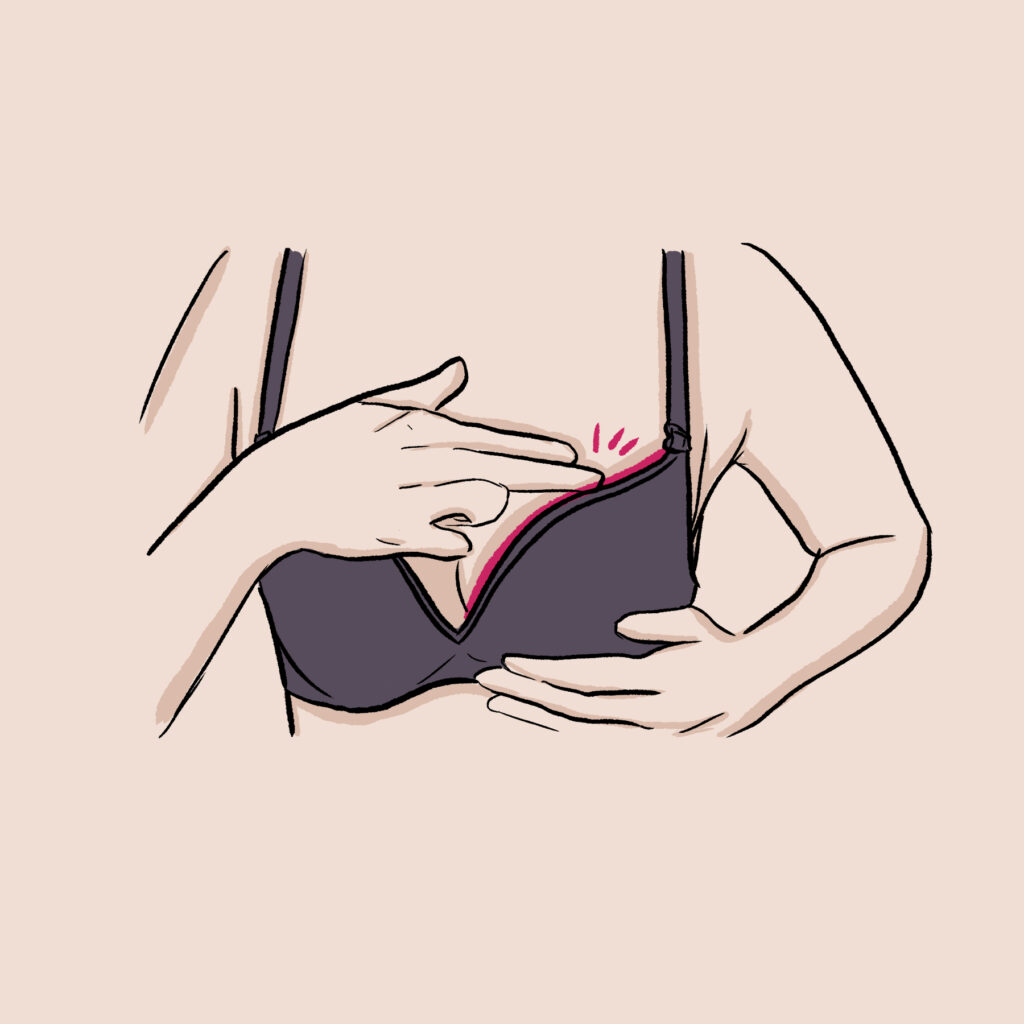
At Understance, we want you to get a bra that feels like it was made for you
That’s why our size calculator is different than others. We emphasize personal comfort, consider your breast fullness (very center-full, average, or very side-set), and ask for your fit preference (relaxed or firm fit).
Okay so, how do I measure my bra size?
With our Size Calculator, all you need to do is give us a few measurements and answer two simple questions. No math from your brain is needed!
Step 1: Let’s Measure Your Underband
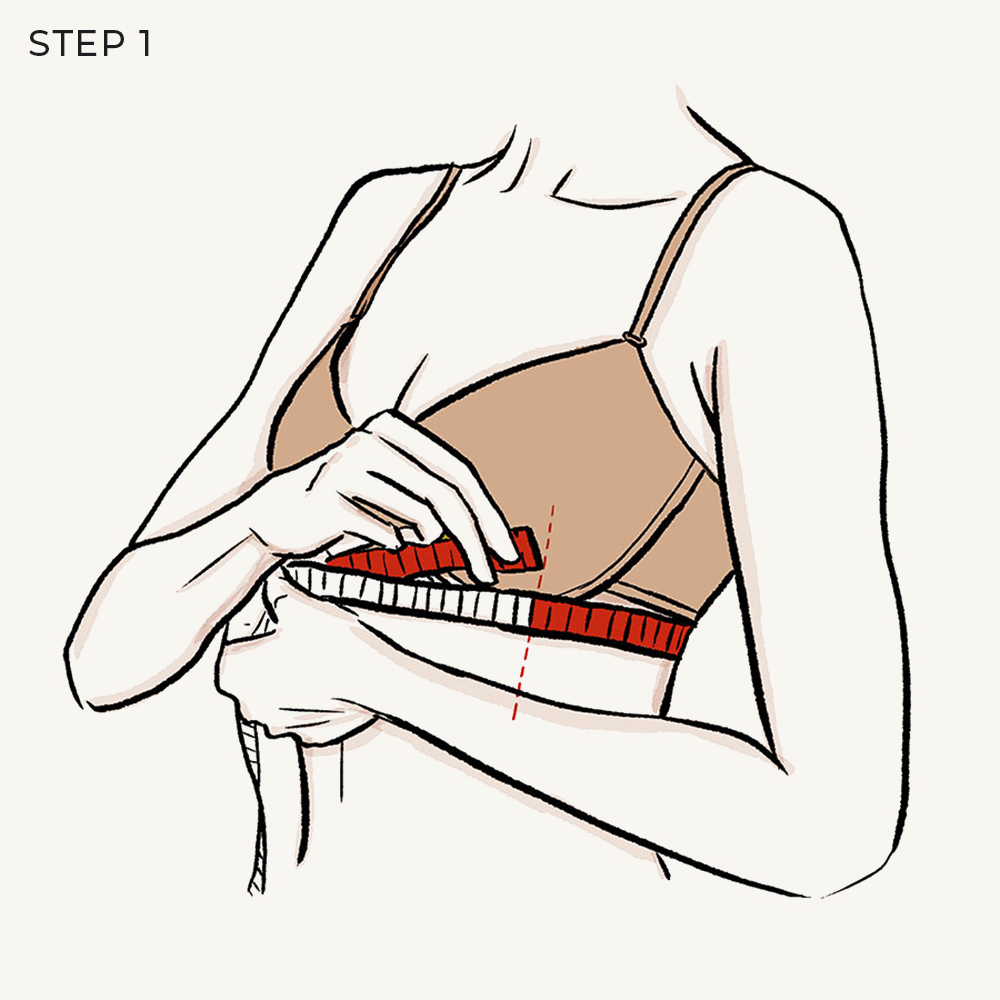
Wrap the measuring tape around your ribcage directly under your bust, as tightly as you’d like your bra to fit. Imitate the band tightness of your ideal bra.
If you don’t have a measuring tape, you can purchase one here. You could also measure yourself with a string or ribbon and line it up next to a ruler later.
A quick note on the role of the band: the band is supposed to do most of the lifting. The cups are there to give your breasts some shape, and the straps are there to keep the bra in place. Don’t over tighten the straps for lift! If you want your bra to be lifting, pull the measuring tape tight when measuring your ribcage.
Step 2: Now Your Standing Bust Measurement
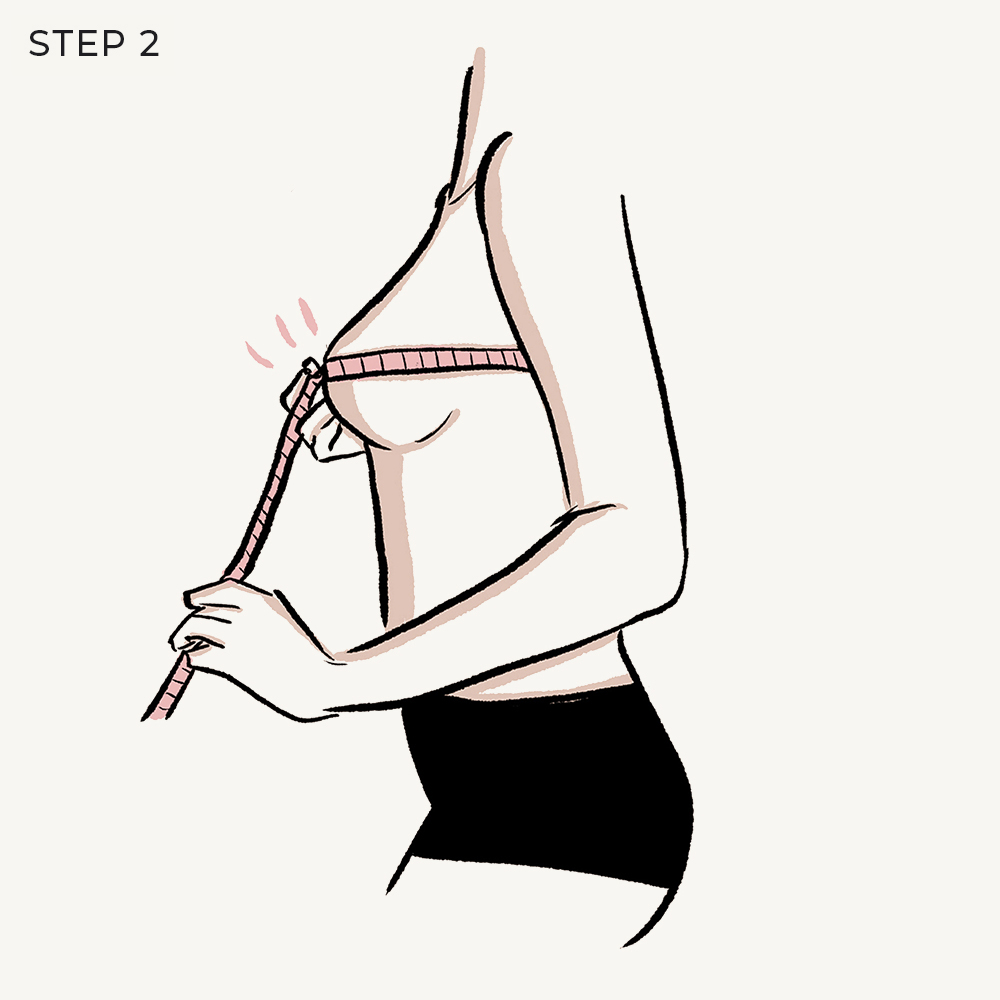
Stand or sit up straight. Loosely wrap the measuring tape around the fullest part of your bust. Measure without a bra or shirt on (or else you’ll be measuring the bra or shirt, and not your breasts).
Step 3: Now Your Leaning Bust Measurement
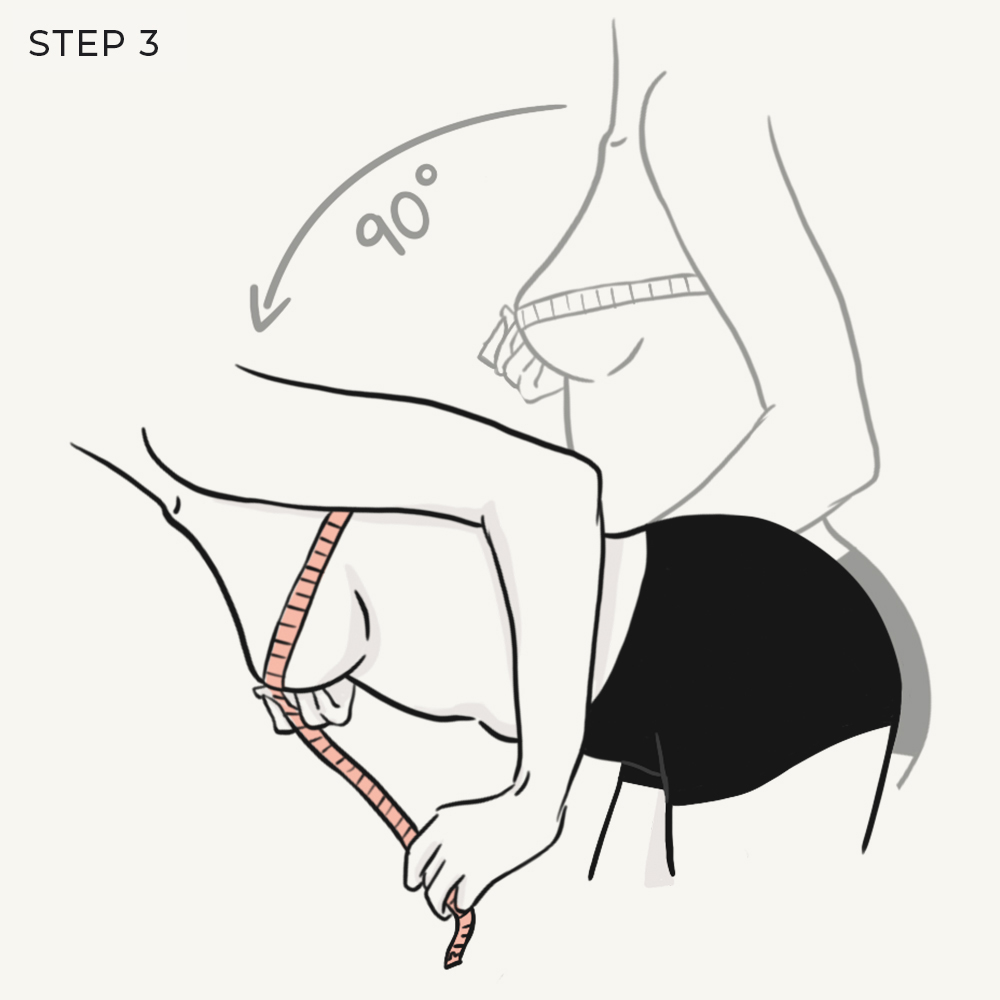
Lean forward about 90 degrees, let your breasts hang fully, and loosely wrap the measuring tape around the fullest part. Don’t pull the tape too tight. Measure without a bra or shirt on.
Step 4: Where Does Your Breast Fullness Lie?
Look in the mirror and determine your breast fullness.
If you can fit about two fingers between your breasts when they are supported, choose “Average.” If you can fit three fingers or more, choose “Very Side-Set.” If you can fit less than one finger, choose “Very Center-Full.”

We previously upgraded our Size Calculator to consider very center-full vs. average vs. very side-set breasts, as they do not share the same amount of volume, but the measuring tape would technically show the same bust measurement.
Now, if your breasts are very center-full, our calculator will add a cup size, and if your breasts are very side-set, our calculator will subtract a cup size.
Step 5: Fit Preference
We want you to feel 100% comfortable in your bra. With this step, you get to choose between relaxed and firm fit to determine how tight you want your bra to be.
With relaxed fit, expect less lift and a more forgiving band. Best for people who don’t want to alter the natural shape of their breasts and want to prioritize ribcage comfort.
With firm fit, expect more support and a tighter band. Best for people who are looking for major lift and don’t mind a tighter band around the ribcage.

All that’s left is to input your measurements and answers into our Size Calculator, and voila!
You get two bra sizes, your firm fit and relaxed fit. The bolded box is the one that reflects your fit preference from Step 5. We give you both in case you ever want to try the other one.
Your firm fit and relaxed fit are sister sizes.
What if I’m still unsure about my size?
If you tried our calculator, but still feel unsure about which size is right for you, order 2-3 bras in neighboring sizes and return for free what doesn’t fit.
If you’re feeling like you need more guidance, book a virtual fitting, or if you’re in Vancouver, drop by for an in-person fitting at our flagship store, 1024 Robson Street.
Frequently Asked Questions
1. How often should I remeasure my bra size?
We recommend remeasuring every 6 months or when your body has recently gone through some changes.
2. Should I measure my bra size with a bra or shirt on?
Do not wear a bra or shirt when measuring yourself. With a bra or shirt on, you are measuring the bra or shirt and not your breasts.
3. How tight should I measure my underband?
Generally speaking, pretend the measuring tape is the bra band and imitate the ideal tightness.
Measure tighter if: your bra band tends to ride up in the back and the bra gets pushed down in the front (the “seesaw effect”), the straps are too far apart, fall off, or cut into your armpits, or you generally have to adjust your bra many times throughout the day. These are signs that your current bra band is too loose.
Measure looser if: you have ribcage sensitivities, you have a more muscular body type (very little “squish” in your ribcage), or you only want nipple coverage with minimal lift. A tight band is not necessary if you don’t want lift.
4. The size you suggested is very different from my usual size. My current bra isn’t that bad. Is there a mistake?
First, make sure you measured correctly. Measure naked (a bra or even a shirt can mess with the measurements). Pull the tape snug for underbust. Lean forward and let your breasts hang fully when measuring leaning bust. If you are not sure about RELAXED FIT or FIRM FIT, start with FIRM FIT if you want any level of lift.
If the calculator is still giving you a size that puts you in disbelief, we encourage you to give it a try. You could order your current size along with the new size – returns are free. If, with your current bra, your shoulder straps fall off, you get spillage, the bra band isn’t staying down… we have an inkling that the new size will make a difference. Visible spillage, anything more than a smidge, means at least 2 cup sizes too small. If the bra band is riding up, it’s at least 1 band size too big.
The most popular sizes at Understance are 36DDD and 34G. Many of our customers switched from 38C to 36DDD, 46DD to 42K, 34D to 30G… When a bra fits well, your breasts are not smooshed by the cups. They are contained, separated, and lifted.
All size calculators are approximations, but our calculator is off by only one size or less 80%+ of the time. If you’ve visited a store that carries a full size range, tried on several neighboring sizes, and found your best size, stick with that size. However, if you bought your current bra at a big box store that only carries A-DD, then definitely give the new size a try – and see if it unlocks a new world of comfort.
5. Why do some places tell me to add to my underband measurement?
Different bra companies, especially those serving niche size ranges, and calculators use different sizing methods. Some places ask you to add/subtract a few inches to/from your band measurement to get what they deem is the right fit.
Our bra size calculator uses adjusted algorithms for different size groups and prioritizes personal preference above all.
6. Which sizing method does your calculator use?
Our calculator uses “plus 0” and “plus 2”, depending on your preference for a firm or relaxed fit.
If you prefer a firm and supportive fit, prioritizing shoulder relief and separation, you will get your “plus 0” size. It will be a smaller band size, and a larger cup size.
If you prefer a loose and relaxed fit, prioritizing ribcage comfort and keeping the natural breast shape, you will get your “plus 2” size. It will be a larger band size, and a smaller cup size.
Our size calculator measures your underband differently. Loose underband and tight underband can differ by 4’’ or more. Instead of taking an average of the two, we ask that you measure your underband as tightly as you’d like your bra to fit. If you are familiar with size calculators that take loose, snug, and tight measurements, our measurement will be closest to “snug.”
7. What sizing system does Understance use?
We use U.S. sizing. If you are more familiar with U.K. sizing, here’s a side-by-side comparison of cup sizes:
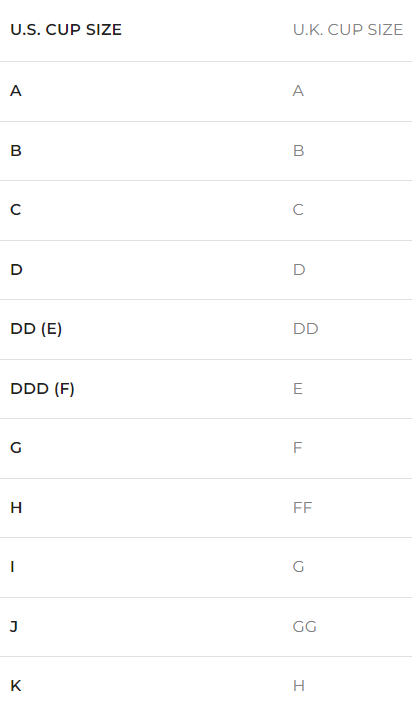
8. Where can I get a bra fitting?
You can book a free virtual fitting with a fit specialist here. If you’re in Vancouver, drop by our flagship store to get a free in-person fitting and try on our bras.
9. What is a sister size?
Sister sizes are bra sizes that have the same amount of volume in the cups, but slightly different band sizes. For example, 36C and 38B are sister sizes with 36C having the smaller band. You can learn more about sister sizes here.
10. Which bra style is right for me?
Take our style quiz or chat with a fit specialist to see which styles suit you best. Ultimately, the right bra style for you is the one that you feel the most comfortable and supported in.
See a list of bra styles here.
11. How do you know if your bra fits?
We recommend checking the following for the right fit:
1. The bra band should stay put without being uncomfortably tight. It should be parallel to the floor, not riding up in the back.
2. Shoulder straps shouldn’t dig in, slip off, or cut into your armpits.
3. Your breasts should be contained in the cups without overflow or gaps.
4. The underwire should contour your breasts without poking anywhere.
5. Generally, the center gore should lie flat against your chest. However, if your breasts are touching when supported (there is no room for the center gore between your breasts), you are wearing a wireless bra with no center gore, or you have an inverted sternum, the center gore doesn’t need to lie flat against your chest.
Remember to do the scoop and swoop (reaching into the bra cups and scooping all the breast tissue into them). Do this every time you put a bra on.
Read our complete fit check guide here.
12. Why doesn’t my bra fit properly?
There could be many reasons why your bra doesn’t fit properly. Consult our troubleshooting guide or book a virtual fitting with a fit specialist.
